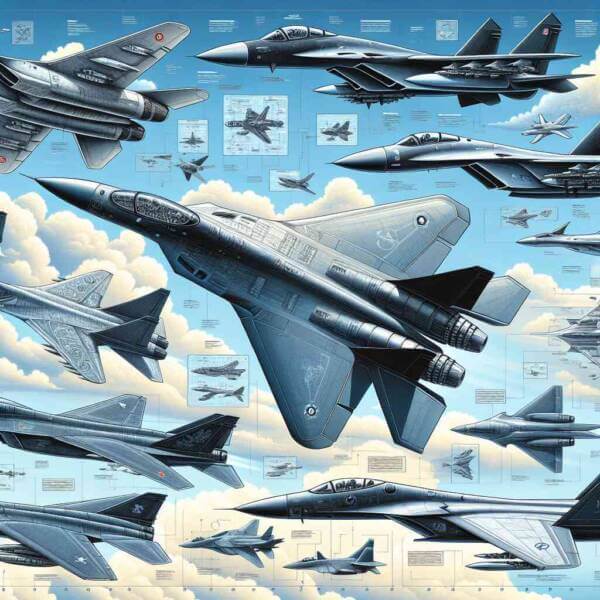
Military aviation is an essential part of modern defense strategies around the world.
Today, military aviation encompasses a wide range of aircraft types, from fighter jets and bombers to surveillance drones and transport planes.
History of Military Aviation
Military aviation started during the dawn of aerial warfare, with aircraft initially used for spying on enemy movements.
Major milestones in military aviation history include:
- The introduction of fighter planes and bombers
- World War II advancements
- Rapid development of jet technology
- Rise of unmanned aerial vehicles (UAVs)
Each era brought more powerful aircraft that expanded aerial warfare.
Types of Military Aircraft
Military aviation includes a variety of aircraft, each designed for unique purposes.
Common categories of military aircraft are:
- Planes built for speed and agility
- Aircraft for long-range attacks
- Planes used to move troops and equipment
- Eyes in the sky for modern armies
Each type plays a vital role in military operations, from securing airspace.
Why Control of the Skies Matters
Air superiority is essential for achieving military success.
Strategic advantages of air dominance:
- Reducing enemy effectiveness
- Cutting off enemy resources
- Gathering critical intelligence
- Boosting morale
Nations with strong military aviation capabilities can control conflicts.
Technological Innovations in Military Aviation
Constant research and development push boundaries for future warfare.
Recent innovations include:
- Stealth technology
- Ultra-fast strike capabilities
- Artificial intelligence-driven missions
- Laser and electromagnetic systems
These advancements increase survivability for air forces worldwide.
Risks and Limitations
From high costs to geopolitical tensions, the road to air dominance is filled with hurdles.
Key challenges include:
- Budget constraints for defense programs
- Need for constant upgrades
- Cybersecurity threats
- New debates about AI in warfare
Addressing these challenges is crucial to staying ahead.
What Lies Ahead
Nations will continue investing in cutting-edge aerial technology to maintain strategic advantages.
Expected advancements:
- Autonomous mission planning
- Space as the next battlefield
- Reducing environmental impacts of defense operations
- Enhanced multinational cooperation
The next era of military aviation will shape the future of global security.
Conclusion
Its history, present achievements, and future possibilities showcase technological excellence.
As technology continues to evolve, the skies will remain a critical arena visit this website where military aviation safeguards freedoms.
The future of military aviation is limitless — and it’s only just beginning.